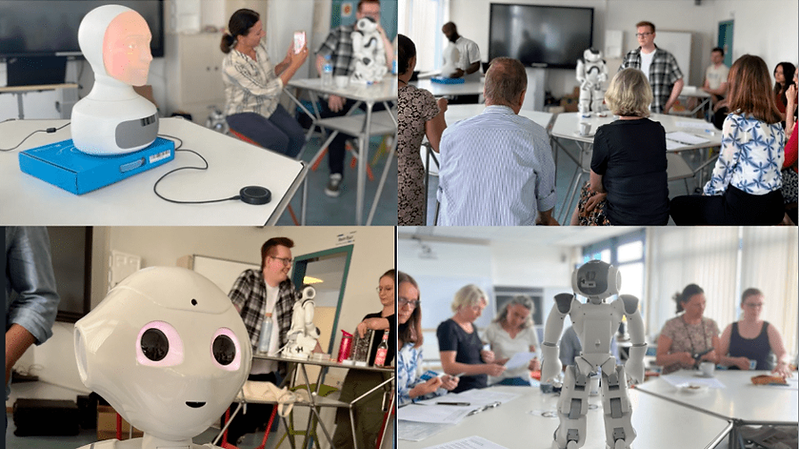Human-like Robot to Assist Teachers: A German organisation is seeing a future where teachers and robots work together to bring the best in learners.
Educators are exploring the possibility of introducing robots to enhance learning in an interactive and collaborative way.
Ilona Buchem is head of the Communication Laboratory and Professor of Media Communication at the University of Applied Sciences (BHT) in Berlin, Germany.
Focusing on the application of humanoid robots in education, she has developed a number of projects that use robots to facilitate classroom activities. They can help students learn language, math, business, and project management strategies in a fun, interactive way.
As a founder and co-chair of the European Society for Technology-Enhanced Learning (EATEL) Special Interest Group on Educational Robotics (EduRobotX) and a member of HARMONIK Ilona Buchem has won multiple awards for her research. The most recent was the AHFE 2022 Best Paper Award. HARMONIK, an interdisciplinary research network dedicated to humanoid robots, is a key partner in the program.
In June 2023, AACE Review sat down with Professor Buchem to discuss the future of humanoid robots in education.
The educational benefits of humanoid robots
Humanoid robots are able to interact with people in a more natural and intuitive way because of their human-like features. Humanoid robots can support learning in real space, using facial expressions, body language, voice and speech to communicate with humans. People can also be programmed to facilitate robot interaction with humans, such as in group-based or project-based collaborative learning scenarios.
In addition, humanoid robots have the advantage of being seen as social entities, creating emotional connections with learners that can help motivate learning.
At the same time, humanoid robots can take on routine tasks such as sequencing, organizing, and timing. This helps teachers to devote time and energy to more in-depth and personalized classroom instruction.
Its teaching application is very wide, not only limited to STEM fields, but also in the classroom of arts, languages, business and other subjects. In addition, humanoid robots can create a low-stress environment for students to have patient, non-judgmental interactions and avoid tension and anxiety.
The role of humanoid robots in the classroom
Humanoid robots can be teachers’ assistants, but they are not trying to replace human teachers and cannot. Instead, humanoid robots can serve as assistive tools and educational technologies to create new possibilities for engagement and interaction in the classroom.
The specific application of humanoid robots depends on the educational context, subject matter, target group and specific educational goals. Here are the roles humanoid robots typically play in teaching:
Interactive Learning facilitators: Humanoid robots can engage students in classroom interactions, thereby facilitating learning. For example, they can run games, quizzes or simulations, and provide feedback and encouragement to students.
Facilitators of collaborative learning: Humanoid robots can lead group activities, encourage teamwork, and facilitate communication between students. They can enhance the collaborative learning experience by assigning roles to group activities, moderating discussion, and facilitating participation.
Concept Demonstrations: Humanoid robots can be used as visual AIDS to demonstrate concepts that are difficult to explain through text or images alone. For example, they can be demonstrated through body language, making knowledge more tangible and less forgettable.
Personalized Tutoring: Humanoid robots can provide personalized tutoring. They can assess the learning needs of individual students, track progress, provide targeted support and guidance, and enable students to learn at their own pace.
Special Needs Support: Humanoid robots can help students with special needs. For students with social disabilities, for example, they can provide continuous interaction, repetitive practice, personalized feedback, and create a safe, non-judgmental environment to support their social skills development.

